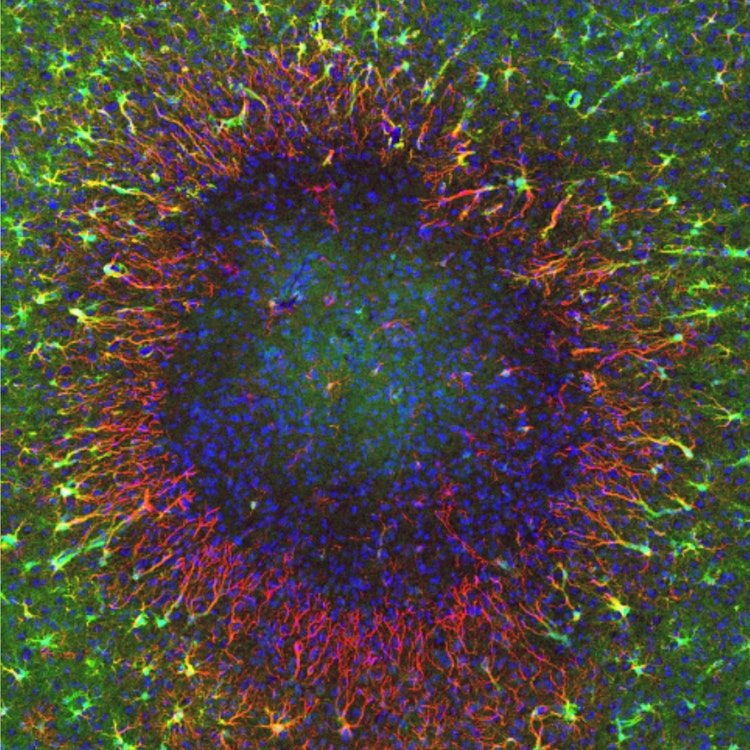
Astrocytes adopt a progenitor-like migratory strategy for regeneration in adult brain
Mature astrocytes become activated upon non-specific tissue damage and contribute to glial formation. Proliferation and migration of adult reactive astrocytes after injury is considered very limited. However, the regenerative behavior of individual astrocytes following selective astroglial loss, as seen in astrocytopathies, such as neuromyelitis optica spectrum disorder, remains unexplored. Here, we performed longitudinal in vivo imaging of cortical astrocytes after focal astrocyte ablation in mice. We discovered that perilesional astrocytes develop a remarkable plasticity for efficient lesion repopulation. A subset of mature astrocytes transforms into reactive progenitor-like (REPL) astrocytes that not only undergo multiple asymmetric divisions but also remain in a multinucleated interstage. This regenerative response facilitates efficient migration of newly formed daughter cell nuclei towards unoccupied astrocyte territories. Our findings define the cellular principles of astrocyte plasticity upon focal lesion, unravelling the REPL phenotype as a fundamental regenerative strategy of mature astrocytes to restore astrocytic networks in the adult mammalian brain. Promoting this regenerative phenotype bears therapeutic potential for neurological conditions involving glial dysfunction.
Download
herwerth-2024.pdfResearchers









